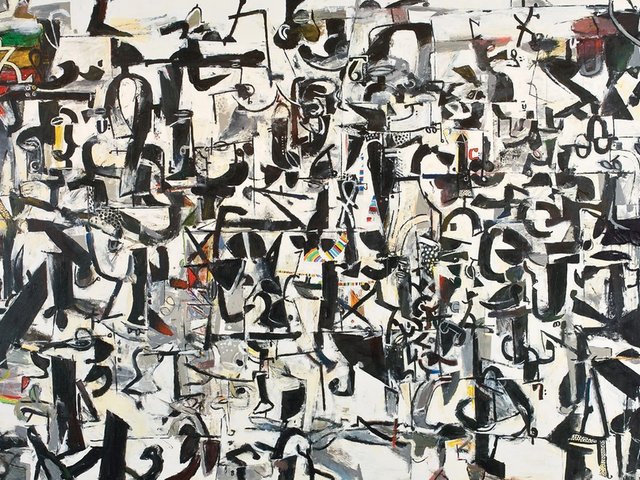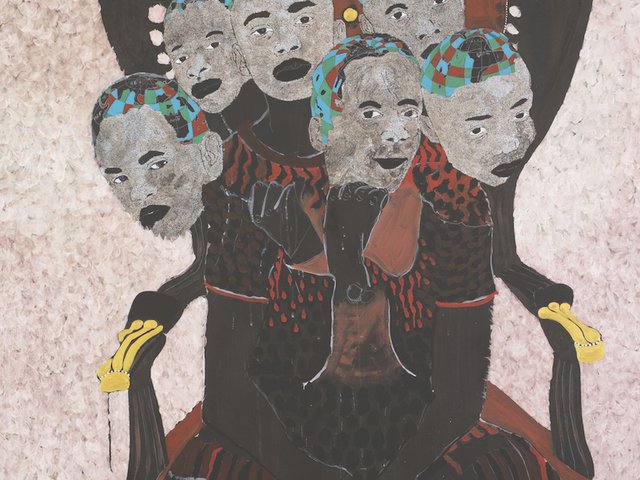The Cameroonian artist Pascale Marthine Tayou made our trash look beautiful at Art Basel in June, creating a forest of branches adorned with discarded, brightly-coloured plastic bags for the Unlimited section. The installation was brought by Galleria Continua from San Gimignano in Tuscany, which also helped to fund Marthine Tayou’s exhibition Boomerang at London’s Serpentine Gallery this spring and its expanded version currently on display at the Palais des Beaux-Arts in Brussels (until 20 September).
Galleria Continua, which also represents the French-Algerian artist Kader Attia and the Benin-born Meshac Gaba, is just one of numerous Italian galleries working with artists from Africa. Collectively these galleries have played a crucial role in bringing the artists of this vast continent to greater public prominence.
“We have bought substantial parts of the collection from Italian galleries,” says Mark Coetzee, the director of the Zeitz Museum of Contemporary Art Africa (Zeitz MoCAA), which will open in a former granary in Cape Town at the end of 2016. “Many Italian galleries [showed] artists from Africa long before any others.”
Coetzee’s purchases for Zeitz MoCAA include the award-winning work made by Edson Chagas for the Angola pavilion at the 2013 Venice Biennale. This was bought from A Palazzo Gallery in Brescia, which also represents the 28-year-old Ibrahim Mahama from Ghana, one of Africa’s fastest-rising stars. The gallery paid for the production of Mahama’s massive installation of jute-sacks used to transport coal in Ghana, currently on the walls of the Arsenale for this year’s Venice Biennale (until 22 November). A much smaller jute-sack tapestry hangs outside the 17th-century palace in the centre of Brescia, which is home to the A Palazzo Gallery and where a joint display of work by Mahama and Chagas is on view this summer (until 15 September).
It is perhaps surprising to find an exhibition of new art from Africa in this prosperous north Italian city, which otherwise barely registers on the contemporary art map. But gallery director Chiara Rusconi says Italians are extremely receptive to African artists. “We have a lot of Italian collectors of Chagas and Mahama, including museums and institutions… at least 30,” she says, adding that the gallery “is currently developing more relations with African artists”.
So why do Italian galleries have such a strong tradition of supporting African artists? Coetzee wonders if the Arte Povera movement of the 1960s “prepared the Italian eye for the found materials that are often used by artists in Africa due to the lack of funding for more expensive materials”.
Others say that the colonial history in Africa of other European countries, such as France, can be a hindrance rather than an advantage. “Colonialism involves imposing your own culture on foreign countries, rather than being receptive to theirs,” says Lorenzo Fiaschi of Galleria Continua.
In France, numerous galleries show artists from Francophone Africa but they rarely engage with artists from other African countries. “You will find artists from North Africa being shown in galleries such as Anne de Villepoix, Kamel Mennour and Galerie Polaris, but there is a dearth of artists from the rest of the continent,” says Bomi Odufunade, who runs the art advisory company Dash & Rallo, which specialises in artists from Africa and its diaspora. “This has something to do with the French being steeped in the culture of classical art originating from West and Central Africa, what they term ‘tribal’ or ‘primitive art’. The market for this is hugely active in France, but the collectors who buy these works rarely move into buying contemporary works by artists from Africa today.”
There are exceptions, of course, says Odufunade: Galerie Lelong in Paris has shown the Cameroonian artist Barthélémy Toguo for many years and Galerie Jean-Marc Patras represents the photographer Samuel Fosso, also from Cameroon.
Primo Marella, who has run a gallery in Milan showing artists from Asia and then Africa for more than 20 years, says that although a vast amount of bad art is being produced in Africa, when you do find talented artists “they are often making work at the highest level, work which can easily hold its own on the international stage”.
Marella, who now represents four African artists, says it is only in the past seven or eight years that the art world has become truly global. Previously, Western galleries tended to focus on their own domestic artists. “But the work being produced in the US and Europe, started to look tired and repetitive; there was little courage, little innovation.” Italian galleries recognised early on that the future lies in the rest of the world. “We have always been pioneers,” he says. Selected Italian galleries that show African art Galleria Continua, San Gimignano: Kader Attia (France/Algeria), Meshac Gaba (Benin), Pascale Marthine Tayou (Cameroon)
A Palazzo Gallery, Brescia: Edson Chagas (Angola), Ibrahim Mahama (Ghana)
Primo Marella Gallery, Milan: Vitshois Mwilambwe Bondo (Democratic Republic of Congo), Abdoulaye Konaté (Mali), Nidhal Chamekh (Tunisia), Cameron Platter (South Africa)
Noire Contemporary Art Gallery, Turin: Zwelethu Mthethwa (South Africa)
Galleria Fonti, Naples: Kiluanji Kia Henda (Angola)
Frittelli Arte Contemporanea, Florence: Georges Adéagbo (Benin)



